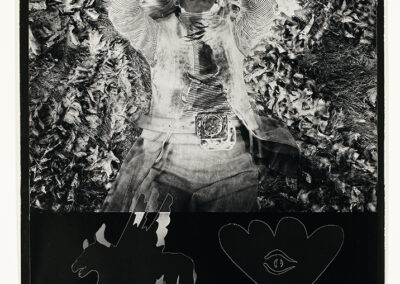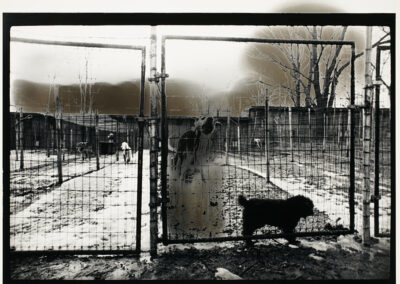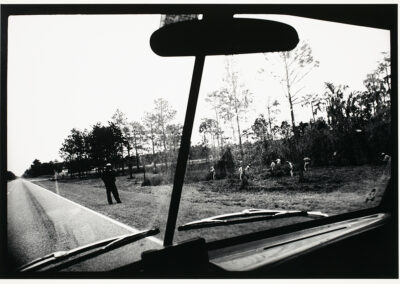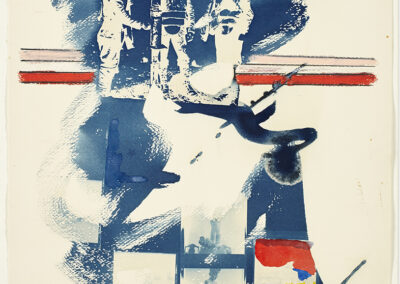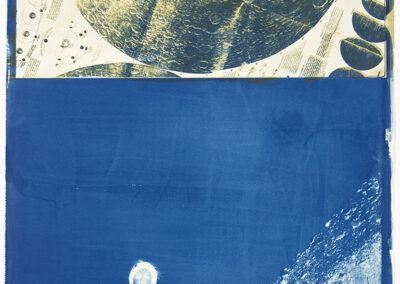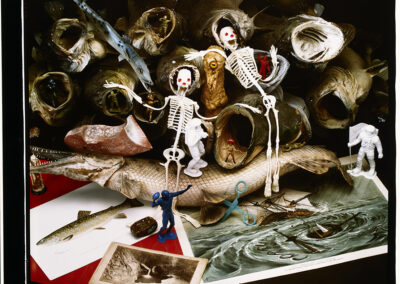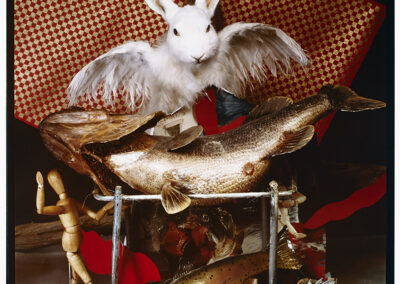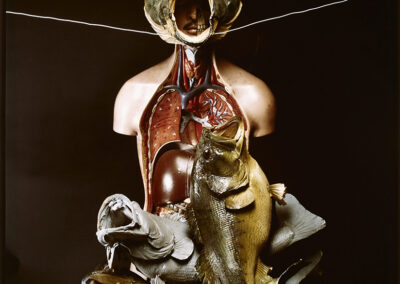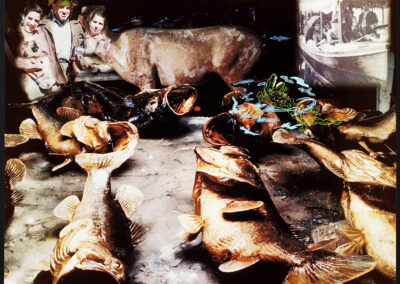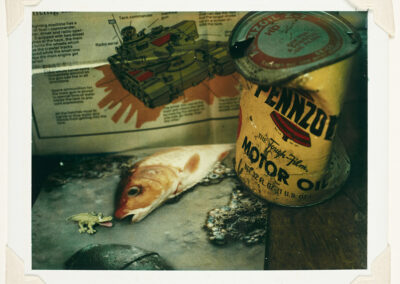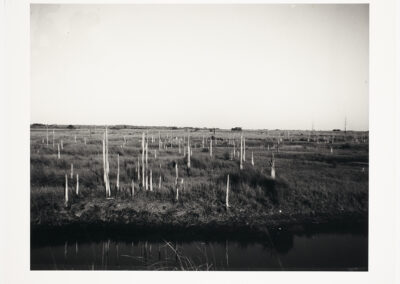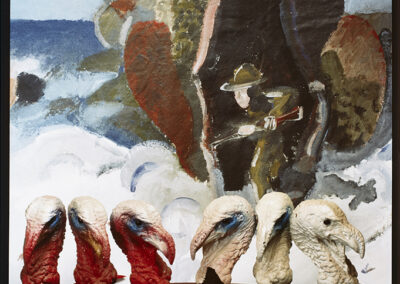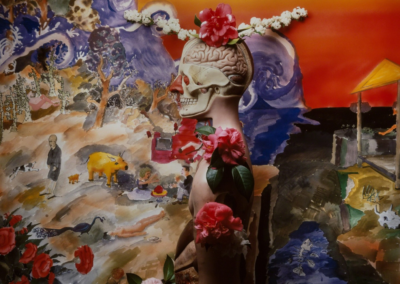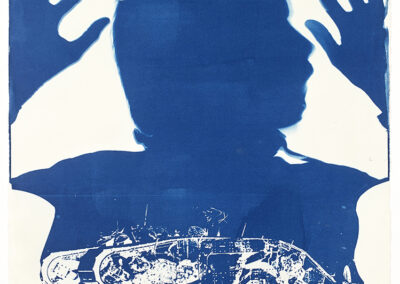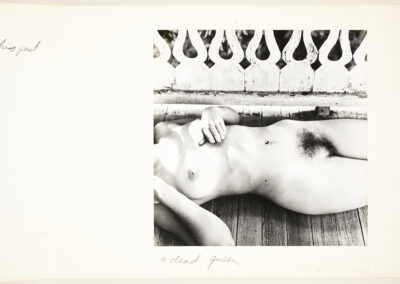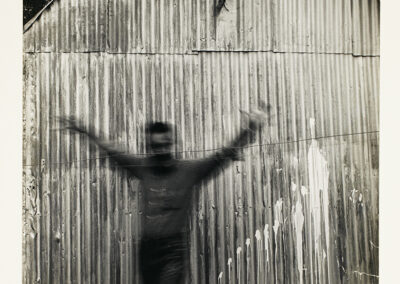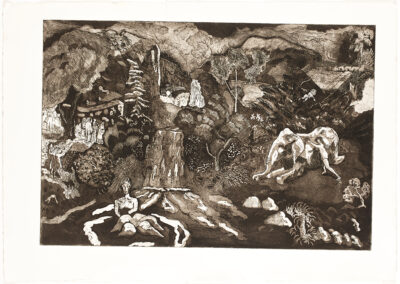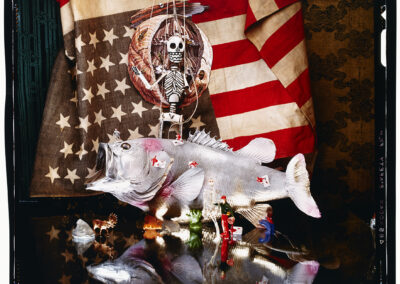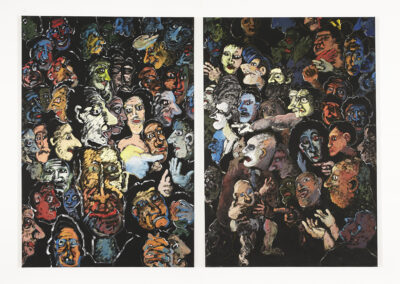Our next Artist You Need To Know is Robert W. Fichter.
A native of Fort Meyers, Florida (he was born in 1939), Fichter grew up in Sarasota, “where the ruins of circus impresario John Ringling’s unfinished Ritz -Carlton Hotel left an indelible impression on him; the artist frequently explored the clash between decaying civilization and fecund nature in his work.” (from here)
After initially studying anthropology at the University of Florida at Gainesville, Fichter later switched to fine arts (1959-63); he also was a student of Ken Kerslake, in printmaking, and furthered his photographic studies with Jerry Uelsmann. The latter encouraged Fichter to pursue an MFA at the University of Indiana (1963 – 66), where he was greatly influenced by Henry Holmes Smith.
After earning his MFA, Fichter worked with Nathan Lyons as an Assistant Curator at the George Eastman Museum in Rochester, New York (he would later mount a solo exhibition there, in 1968, which coincided with his leaving to become a faculty member at the University of California, Los Angeles). Fichter had several visiting teaching positions over his career as an educator (such as at the School of the Art Institute of Chicago and the Cranbrook Academy of Art in Michigan), but the majority of his teaching career was at Florida State University in Tallahassee. He began teaching there in 1972 and would be a major part of that school until his retirement in 2006, including serving as Chair of the Department.
Since the 1960s, Fichter has been one of the most important experimental photographers in the United States: he’s often combined drawing, hand photoengraving processes and photographic images in his overall photographic practice. Fichter has called this Print-Photo-Fusion: “Printmaking, at the heart of the matter, is about transferring a mark from one surface to another. It offers artists and others a mass production system of distribution of images and words. This frequently allows lower costs per unit of production than say, painting. When you put photos through untraditional processes, then you get new traditions.”
Fichter has exhibited widely with more than forty solo exhibitions to his credit: notable exhibitions have taken place at the National Gallery of Canada (1970), Museum of Fine Arts, Boston (1974), School of the Art Institute of Chicago (1974), Kunsthaus Zurich (1977), Los Angeles Center for Photographic Studies (1981), Whitney Biennial (1981), University of South Florida Art Galleries (1984), Southeastern Center for Contemporary Art, Winston-Salem, North Carolina (1986), and the Gallery of Art, University of Northern Iowa, Cedar Falls (1990).
One of the most important of his exhibitions took place in 1982: curator Robert Sobieszek organized a major retrospective of his work at the George Eastman Museum that also traveled to the Fine Arts Gallery, Florida State University (Tallahassee, FL); Frederick White Gallery, UCLA; Museum of Contemporary Photography, Columbia College (Chicago); San Francisco Museum of Modern Art; The Art Museum, University of New Mexico; and the Brooklyn Museum.
Fichter’s work is included in the collections of the Center for Creative Photography (Tucson, AZ), George Eastman Museum (Rochester, NY), High Museum of Art (Atlanta, GA), International Center of Photography (NYC), Los Angeles County Art Museum, Metropolitan Museum of Art, Museum of Contemporary Photography (Chicago, IL), National Gallery of Art (Washington, D.C.), and Norton Simon Museum (Pasadena, CA), among many others.
In 2006, the artist donated his archive of drawings, prints, photographs, paintings, preparatory materials, and manuscripts to the University of Maryland at Baltimore County. Although retired from academia, Ficther has been – in collaboration with his wife Nancy Smith Fichter – the Co-Director of The Lillian E. Smith Center for Creative Arts, at Clayton, Georgia. This is “a not-for-profit arts group whose mission is to offer a place where gifted creative artists and scholars in various disciplines may find the conditions of quiet solitude and privacy in which to pursue their work.” (from here)
Many of the artworks shared here are from his major series of works, which include Psychological Garden, Environmental Horror and After Eden. These links will offer more details about his process and ideas. Much more about Robert W. Fichter’s life – and many more of his images – can also be enjoyed here.

